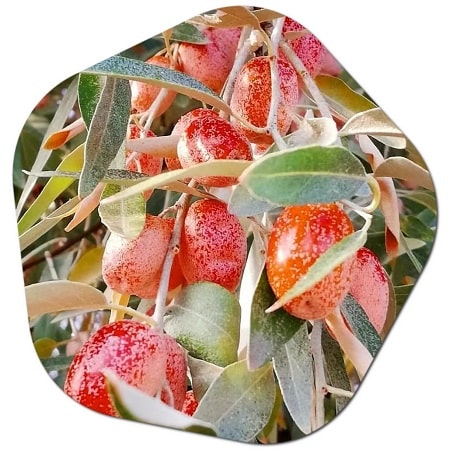Are Russian olive trees good for anything?
Also known as the Russian olive, the spindle is a small and oval fruit in yellow-brown colors with a sweet-sour, in other words, cake-like taste, which can grow even in the most infertile soils because the tree can store nitrogen in its root. Usually found fresh, it is consumed as jam or marmalade.
Russian olive trees (Elaeagnus angustifolia) have both positive and negative aspects, and their usefulness can depend on specific contexts. Due to concerns about invasiveness and potential negative impacts on ecosystems, Russian olive trees are restricted or banned in some areas. Before planting Russian olive or any landscaping plant, it’s important to check with local authorities, extension services, or environmental organizations to ensure that the chosen species is appropriate for the region and won’t pose a threat to the local ecosystem.

Additionally, it’s crucial to consider alternatives that are native or non-invasive to support biodiversity and ecosystem health. Here are some characteristics that can be considered beneficial, as well as potential drawbacks:
Benefits:
- Erosion Control: Russian olive trees are often used for erosion control, particularly in areas with poor or disturbed soils. Their extensive root systems help stabilize soil, preventing erosion.
- Tolerance to Harsh Conditions: Russian olive trees are known for their ability to thrive in a variety of environmental conditions. They can tolerate drought, poor soil, and a range of temperatures.
- Wildlife Habitat: The flowers and fruit of Russian olive trees can attract wildlife, including birds and insects. The berries, although bitter for humans, can be a food source for certain birds and mammals.
- Nitrogen Fixation: Like some other members of the Elaeagnus genus, Russian olive trees have the ability to fix nitrogen in the soil, which can contribute to soil fertility.
Drawbacks:
- Invasiveness: Russian olive trees are considered invasive in some regions, particularly in North America, where they have been introduced. Their aggressive growth can outcompete native vegetation, leading to ecological imbalances.
- Water Consumption: In some areas, Russian olive trees can have high water requirements, potentially competing with native plants for water resources.
- Allelopathic Properties: Russian olive trees produce compounds that inhibit the growth of other plants around them, a phenomenon known as allelopathy. This can impact the diversity and composition of plant communities in their vicinity.
- Difficult to Control: Once established, Russian olive trees can be challenging to control or eradicate due to their prolific seed production and resilient nature.
What can you make with Russian olives?
Russian olive (Elaeagnus angustifolia) is primarily known for its invasive nature in certain regions, and it is not typically cultivated for its fruit or wood. However, some people may choose to make use of Russian olive fruits in certain culinary and craft applications. Here are a few things you can make with Russian olives:
- Jams and Jellies: The small, red, and silver-scaled berries of the Russian olive can be used to make jams and jellies. The fruit has a tart flavor, so it is often combined with other sweeter fruits or sugar during the jam-making process.
- Infusions and Beverages: Some people use Russian olives to make infusions or beverages. The berries can be steeped in water to make a flavored drink. However, it’s important to note that caution should be exercised when consuming any wild plant, as some may be toxic.
- Potpourri: Dried Russian olive berries can be used in potpourri or other decorative arrangements due to their unique appearance.
It’s crucial to mention that Russian olive is considered invasive in certain areas, and its spread can have negative ecological impacts on native ecosystems. Before using Russian olives for any purpose, it’s essential to check with local authorities and ensure that the activities align with conservation goals and regulations. Additionally, if you’re interested in using wild plants for culinary purposes, it’s important to be certain of their edibility and safety, as not all wild berries are suitable for consumption. Always err on the side of caution and seek guidance from experts if you’re uncertain.





